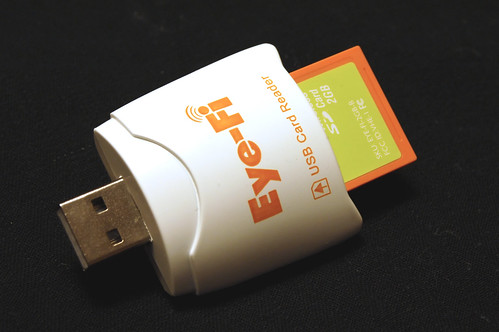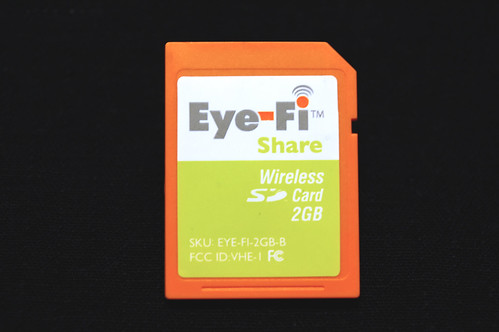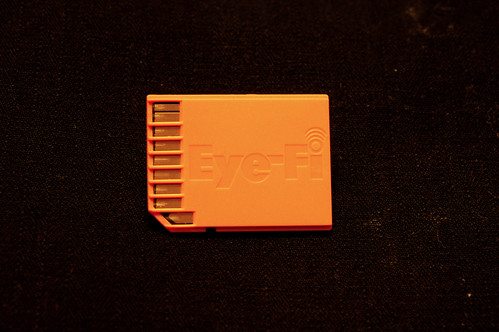Setup of the Eye-Fi is fairly simple. Upon inserting the card into the USB port using the adapter that comes with the package the card is automatically recognized and the installation process is completed quickly since the install files come preloaded on the card. Since Eye-fi is a wireless SD card, when I first saw that they included an adapter I thought it somewhat contradictory. Although funny at first, for the card to properly connect to wireless, one has to use the adapter to set it up first, so it's not really that strange. The user must have the card, a camera (which powers the card), and a wi-fi router in order for the card to work properly.

Once installed, my first impression of the Eye-Fi was one of restriction. The card works through an internet application called the Eye-Fi Manager which proves to be a sort of middleman. The reasons this is implemented are to promote the Hotspot Access Service (H.A.S.) at $15 a year, which allows the user access to more than 10,000 hotspots in the U.S., to allow the user to automatically upload photos to the a wide selection of photo-hosting sites and to keep things more secure.

The problem with uploading directly to photo-hosting sites is that not every photo I take is a masterpiece. It also eats away at a weekly limit quickly on Flickr. It is still an interesting feature that would be really nice with a subscription to the H.A.S. if you're on vacation and a lot of your friends and family want to see how the vacation is going with little lag time before the photos are posted.

The biggest reason I wanted this card is for time lapse photography. I want to transfer files directly to a laptop that's in range while shooting in remote locations. Since the card requires access to the internet in order for it to work, that feature isn't an immediately obvious option.
I have found a couple work-arounds to this major flaw of the card. Photojojo tells about how it could be possible to upload wirelessly to a laptop by connecting a wifi router to the laptop, whether there is internet or not. The other method as detailed by Dave Hansen would be to host a stand-alone server of which seems to prove difficult to do. I have yet to test either method but I think the latter would tailor to my needs. I will post an update when I test out these different methods.
